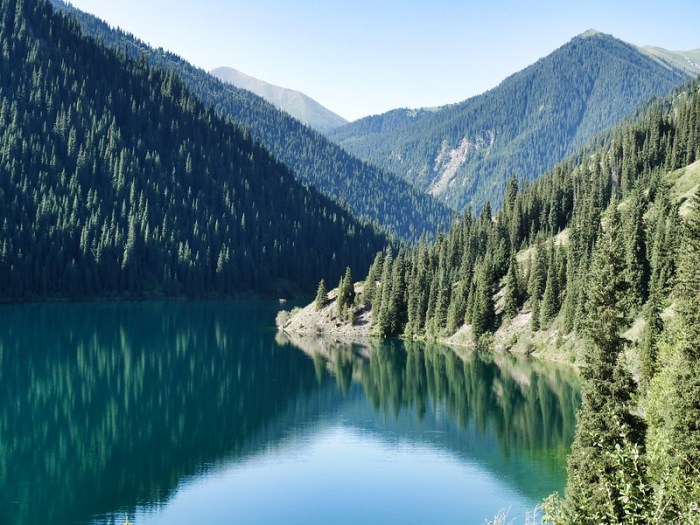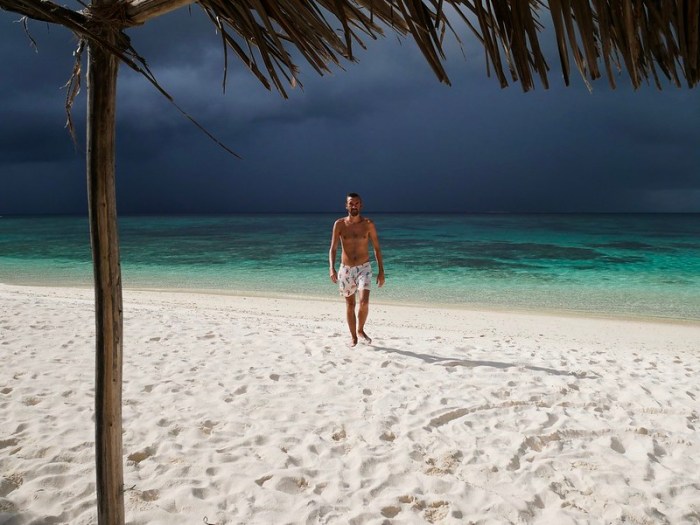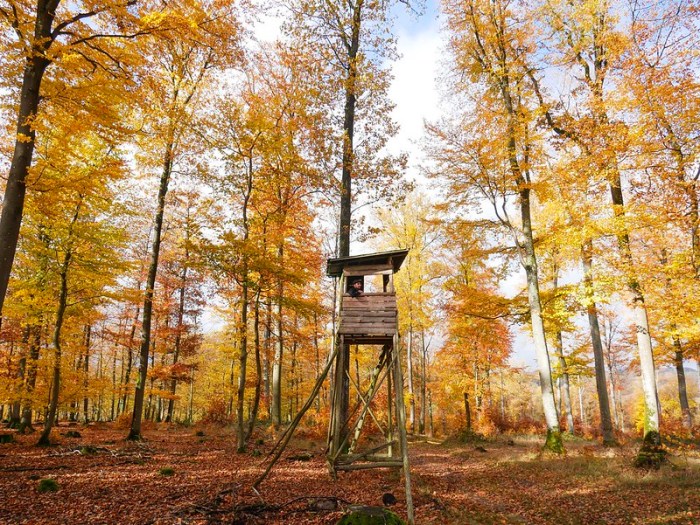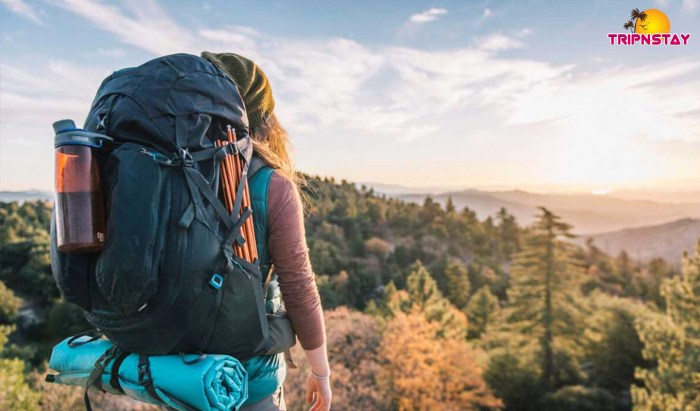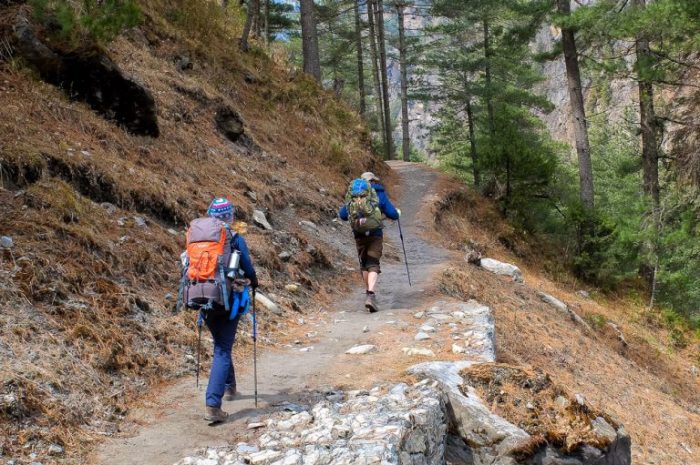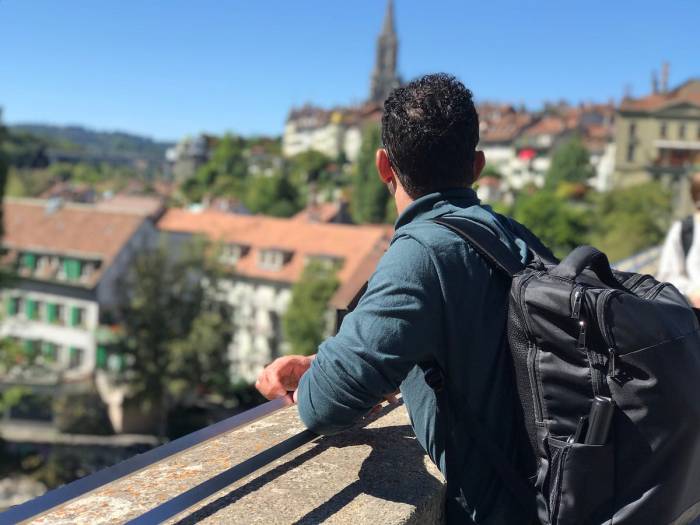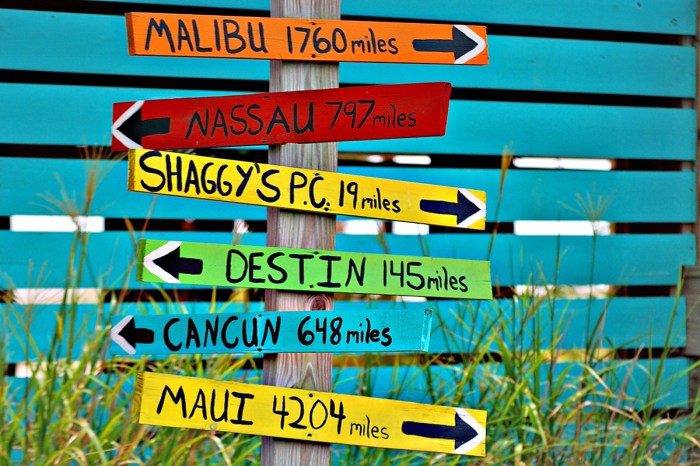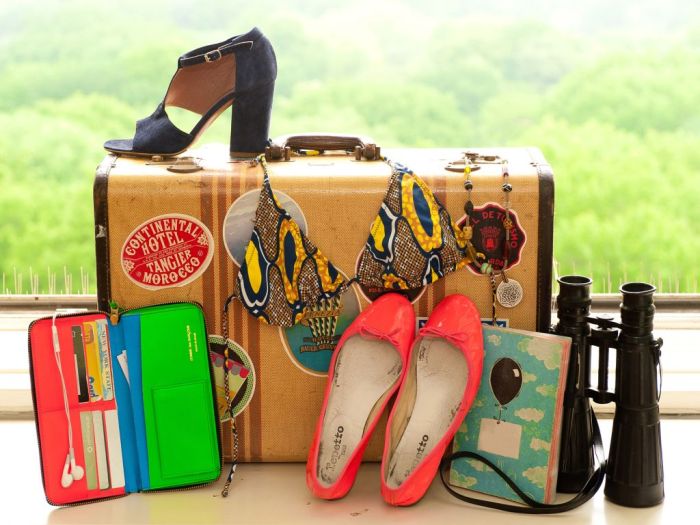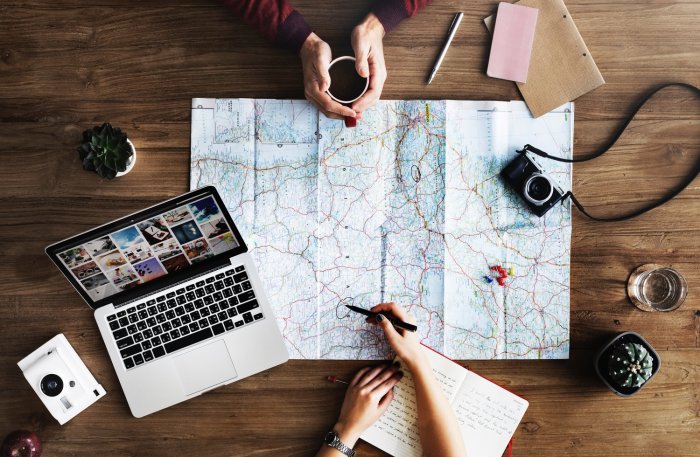Round the world trips for singles offer a unique and empowering experience. Imagine exploring exotic destinations, immersing yourself in diverse cultures, and forging unforgettable memories, all while embracing the freedom and independence of solo travel. This journey is not just about ticking off landmarks; it’s about self-discovery, personal growth, and creating a narrative of your own making. From backpacking through bustling cities to luxury stays in serene landscapes, the possibilities are as vast as the world itself.
This comprehensive guide delves into the intricacies of planning, executing, and enjoying a round-the-world adventure for singles. We’ll cover everything from budgeting and booking to safety precautions, cultural sensitivity, and connecting with others along the way. Prepare to be inspired and empowered to embark on your own epic journey.
Introduction to Solo Travel
Round-the-world trips offer a unique opportunity for personal growth and self-discovery, especially for singles. The freedom and flexibility inherent in solo travel allow for a deeply personalized experience, fostering independence and resilience. This type of journey often fuels a profound understanding of different cultures and perspectives, ultimately enriching the traveler’s worldview.The allure of solo round-the-world journeys extends beyond the typical travel motivations.
Single travelers often seek experiences that promote self-reliance, challenge preconceived notions, and ignite a passion for exploration. These journeys frequently inspire a greater sense of self-awareness, encouraging travelers to push their boundaries and discover hidden strengths.
Motivations and Benefits of Solo Travel
Single travelers often seek opportunities to discover themselves amidst the vastness of the world. This often leads to a profound sense of self-reliance and personal growth. The unique experience of navigating unfamiliar environments alone fosters independence, resilience, and problem-solving skills. Moreover, the freedom to choose one’s own pace and itinerary cultivates a deeper appreciation for personal preferences and individual needs.
Types of Solo Round-the-World Trips
Solo round-the-world journeys cater to diverse interests and budgets. Backpacking trips, focused on experiencing budget-friendly accommodations and local life, provide a vibrant and immersive cultural exchange. Luxury journeys offer unparalleled access to high-end accommodations, exclusive tours, and personalized experiences, catering to those seeking a more lavish adventure. Cultural immersion trips delve deep into the traditions and histories of specific regions, allowing travelers to connect with local communities and gain a deeper understanding of the cultural landscape.
Challenges and Concerns of Solo Travel
Solo travel, while rewarding, can present unique challenges. Safety is a primary concern, requiring diligent planning and awareness of local customs and potential risks. The isolation associated with traveling alone can sometimes be a deterrent. Overcoming feelings of loneliness and finding meaningful connections during the journey requires adaptability and a proactive approach. Managing finances effectively and adapting to unexpected situations are also important considerations.
Comparison: Solo vs. Group Round-the-World Trips
| Feature | Solo Round-the-World Trip | Group Round-the-World Trip |
|---|---|---|
| Flexibility | High – Customize itinerary and pace to personal preferences. | Low – Itinerary often pre-determined and shared among group members. |
| Cost | Potentially lower – Shared accommodations and activities may not always be necessary. | Potentially higher – Accommodation and activity costs may be split among multiple travelers. |
| Personal Growth | High – Increased self-reliance and problem-solving skills. | Moderate – Group dynamics and shared experiences contribute to personal growth. |
| Social Interaction | Requires conscious effort to build connections. | Higher – Group members offer opportunities for interaction and shared experiences. |
| Safety | Requires careful planning and awareness of potential risks. | Increased safety in numbers, but group dynamics may influence safety measures. |
Planning and Preparation
Embarking on a round-the-world adventure as a solo traveler requires meticulous planning. This phase isn’t just about assembling destinations; it’s about crafting a journey that aligns with your financial capacity, personal preferences, and desired level of flexibility. Effective planning ensures a smoother, more enjoyable experience, allowing you to fully embrace the unexpected opportunities that often arise during such extensive travel.Thorough planning is crucial for navigating the logistical complexities and maximizing the rewards of a global journey.
Understanding your financial limitations, researching diverse travel options, and developing a flexible itinerary are all essential elements in ensuring a rewarding and safe experience. A solid foundation of preparation minimizes stress and maximizes the enjoyment of this transformative adventure.
Essential Steps for Planning
Effective planning involves a multi-faceted approach. It starts with a clear understanding of your financial capabilities and desired travel style. This foundational understanding guides your decisions throughout the entire planning process.
Round-the-world trips for singles offer unique opportunities to explore diverse cultures and landscapes. Planning such a journey requires meticulous research, and understanding the nuances of global travel is key. For comprehensive travel guides and insights, consult Travel resources, which can provide invaluable information. This type of exploration, with its flexibility and self-discovery, is perfect for independent travelers seeking an immersive global experience.
- Budgeting and Financial Planning: A detailed budget is paramount. Estimate expenses for flights, accommodation, activities, and daily living costs in each destination. Consider fluctuating exchange rates and potential unforeseen expenses. Explore options for travel insurance and emergency funds. Factor in potential unexpected events such as medical emergencies, flight delays, or visa issues.
Consider using budgeting apps or spreadsheets to track income and expenditures, ensuring you are aware of your spending habits and can allocate funds accordingly.
- Researching and Booking: Utilize a combination of online travel agencies, flight comparison websites, and local travel agents to find the best deals. Compare prices, flight routes, and baggage allowances to ensure optimal value. Use review sites for accommodation to gain insight into the quality of various lodgings. Consider different accommodation options beyond hotels, such as guesthouses, hostels, or Airbnb to explore different cultures and budget options.
Explore options for purchasing multiple flights at once for potential discounts or booking a flight to a hub city and connecting to your destination to optimize cost savings.
- Creating a Flexible Itinerary: A rigid itinerary can hinder spontaneity. Plan key destinations and activities, but allow for flexibility in your schedule. Leave room for unexpected discoveries, changes in plans, or serendipitous encounters. Be prepared to adjust your schedule to accommodate these opportunities. This includes being open to changing your itinerary based on personal preferences and local experiences.
Key Considerations for Single Travelers
Planning a solo round-the-world trip demands careful consideration of unique challenges and opportunities. This includes strategies to ensure safety and maintain a positive travel experience.
| Category | Considerations |
|---|---|
| Safety | Prioritize safety by researching travel advisories, staying in well-lit and secure areas, and avoiding isolated areas at night. Inform someone of your itinerary and expected return dates. Share your location with trusted contacts through GPS sharing or similar apps. Consider purchasing travel insurance that covers medical emergencies and lost luggage. |
| Flexibility | Recognize that flexibility is paramount. Allow time for unforeseen circumstances, such as flight delays or unexpected adventures. Be prepared to adjust your schedule to accommodate new interests and experiences. Allow room for spontaneous decisions, and embrace the unexpected. |
| Budget | Develop a detailed budget and stick to it as closely as possible. Be aware of fluctuating exchange rates and potential hidden costs. Consider utilizing budget-friendly accommodation options and explore local food markets and restaurants to save money. Explore options for travel insurance to safeguard against unforeseen expenses. |
| Connectivity | Ensure access to reliable communication tools, including international SIM cards or portable Wi-Fi devices. Prioritize staying connected with friends and family back home. |
Accommodation Options
Choosing the right accommodation is crucial for a smooth and enjoyable solo trip. It impacts your budget, your safety, and your overall travel experience. From budget-friendly hostels to luxurious boutique hotels, diverse options cater to every traveler’s needs and preferences. Consider your priorities and travel style to select the perfect lodging solution.Finding the ideal balance between comfort, safety, and affordability is key.
This section explores various accommodation types, highlighting their strengths and weaknesses for solo travelers. Understanding the nuances of each option empowers you to make informed decisions, ensuring a positive and secure travel experience.
Hostel Accommodations
Hostels offer a vibrant social atmosphere and cost-effective lodging. They are particularly appealing to budget-conscious solo travelers seeking to connect with other like-minded individuals. The shared rooms and common areas foster opportunities for meeting people and creating lasting memories.
“Hostels often provide a sense of community, especially for solo travelers seeking to connect with others.”
However, personal space can be limited, and the noise level might be higher than in other types of accommodation. Safety is paramount; choose reputable hostels with well-lit common areas and secure lockers. Hostels are a great option for meeting fellow travelers, but noise and lack of privacy should be considered.
Guesthouses
Guesthouses provide a more private and intimate environment than hostels, often with private rooms and shared facilities like kitchens and gardens. They often offer a more personal touch than hotels, with a welcoming atmosphere and local insights. The personalized service can be a huge benefit.
“Guesthouses offer a balance between affordability and a personalized experience.”
Guesthouses might be slightly more expensive than hostels but offer a higher level of privacy and personalized service. They also usually provide more amenities, like breakfast, and often offer local insights.
Hotels
Hotels cater to a wider range of budgets and preferences, offering varying levels of comfort and amenities. They are often the most convenient option for solo travelers seeking a safe and predictable environment. Hotels typically offer a high level of security and consistent service.
“Hotels provide a familiar and dependable environment, especially for those seeking a high level of security and convenience.”
Hotels, however, can be more expensive than hostels or guesthouses. The experience can be impersonal compared to guesthouses or other options. However, they are a reliable and safe choice.
Airbnb
Airbnb provides a wide range of options, from private rooms to entire apartments. This flexibility allows solo travelers to find accommodations that suit their specific needs and budget. The potential for unique experiences and local interactions is appealing.
“Airbnb provides flexibility and the potential for immersive cultural experiences.”
Airbnb accommodations can vary significantly in quality and safety. It’s crucial to carefully review reviews and verify the host’s reputation before booking. Airbnb offers unique experiences but requires more research to ensure safety.
Accommodation Comparison Table
| Accommodation Type | Price Range (Estimated) | Pros | Cons |
|---|---|---|---|
| Hostel | $10-$30 per night | Budget-friendly, social atmosphere | Limited privacy, potential noise |
| Guesthouse | $30-$70 per night | More privacy, personalized service, local insights | Slightly more expensive than hostels |
| Hotel | $70-$200+ per night | Safety, convenience, variety of amenities | Can be impersonal, more expensive |
| Airbnb | $30-$150+ per night | Flexibility, unique experiences, local interactions | Varying quality, requires more research |
Activities and Experiences

Source: rtwin30days.com
Embarking on a round-the-world journey as a solo traveler offers unparalleled opportunities for self-discovery and cultural immersion. Beyond the logistical planning and accommodation choices, the true heart of the adventure lies in the experiences you create. This section delves into the diverse activities and interactions that can enrich your global exploration.The key to a truly rewarding solo trip is not just ticking off destinations, but actively engaging with the local culture.
This involves respectful interaction, open-mindedness, and a willingness to step outside your comfort zone. By embracing these principles, you’ll unlock a deeper understanding of the world and yourself.
Cultural Immersion and Community Interaction
Engaging with local communities is crucial for a truly enriching experience. Visiting local markets, participating in traditional festivals, and attending workshops or classes are powerful ways to learn about customs and beliefs. This direct interaction fosters understanding and respect, creating lasting memories.
- Attend local festivals and celebrations:
- Engage in conversations with locals:
- Volunteer or participate in community projects:
Festivals are vibrant displays of cultural heritage. Participating in local festivities, from religious ceremonies to street fairs, allows you to experience the heart of a community and its unique traditions. Be sure to dress respectfully and inquire about appropriate etiquette before participating.
A simple conversation can reveal a wealth of information about a place. Engage with shopkeepers, restaurant owners, or fellow travelers. Ask open-ended questions, show genuine interest, and be open to learning.
Volunteering offers an authentic opportunity to contribute and experience a community firsthand. Many organizations welcome solo travelers seeking to make a difference and gain a deeper understanding of the local context.
Engaging with Local Customs and Traditions
Respectful engagement with local customs and traditions is paramount. This goes beyond simply observing; it involves actively seeking to understand and appreciate the cultural nuances. By taking the time to learn about local etiquette and customs, you can foster meaningful connections with the people you meet.
- Research local customs and etiquette before travel:
- Learn a few basic phrases in the local language:
- Dress respectfully:
Before venturing into a new culture, research appropriate attire, greetings, and social norms. This shows respect and helps avoid unintentional faux pas.
Even a few basic phrases like “hello,” “thank you,” and “excuse me” can go a long way in building rapport with locals.
Be mindful of local dress codes, particularly when visiting religious sites or cultural events.
Solo Activities for Exploration
Solo travel offers a unique opportunity for self-discovery and independent exploration. Activities that can be enjoyed independently are numerous and enriching.
Planning a round-the-world adventure as a single traveler offers unparalleled freedom and discovery. While exploring the globe, consider incorporating local experiences like discovering walking parks near me, like these walking parks near me , to enhance your immersion in the local culture. These experiences enrich the overall journey, making it even more rewarding for solo adventurers.
- Hiking and nature exploration:
- Sightseeing and cultural tours:
- Cooking classes and food tours:
Hiking trails provide opportunities for stunning scenery and solitude. This activity can be especially rewarding when undertaken alone.
Many cities and regions offer self-guided tours or walking tours. This is a great way to explore at your own pace and delve into the history and culture of a place.
Learning to prepare local cuisine is a fantastic way to experience a culture’s culinary traditions. Cooking classes and food tours often offer opportunities to interact with locals and discover hidden culinary gems.
Safety and Awareness
Prioritizing safety is crucial for any traveler, particularly solo adventurers. Staying vigilant and aware of your surroundings is paramount to a safe and enjoyable trip.
- Be aware of your surroundings at all times:
- Share your itinerary with someone you trust:
- Use reliable transportation:
Pay attention to your surroundings, especially in unfamiliar areas.
Keeping someone informed about your plans and location can provide peace of mind.
Utilize reputable transportation services and avoid risky situations.
Safety and Security

Source: thenomadicfitzpatricks.com
A round-the-world solo adventure presents unique safety considerations. Proactive measures and a well-defined safety plan are crucial for a smooth and secure journey. This section Artikels vital precautions and strategies to ensure a positive and incident-free experience.
Essential Safety Precautions
Prioritizing safety is paramount for solo travelers. A proactive approach, encompassing various aspects, is key. This includes understanding local laws and customs, and packing essential medications and first-aid supplies. Familiarizing yourself with emergency procedures and carrying copies of important documents, like passports and visas, in multiple formats (physical and digital) can prove invaluable.
Staying Connected and Informed
Maintaining communication and awareness of travel advisories are essential for solo travelers. Staying connected allows for real-time updates and access to vital information. Utilizing a satellite phone or a reliable communication method like a global SIM card allows for connectivity in remote areas. Regularly checking travel advisories and safety alerts from reputable sources, such as the government’s travel advisory website, can help mitigate potential risks.
Managing Personal Safety and Security
Safety strategies vary depending on the destination. Adapting to local customs and avoiding risky situations, like walking alone at night in poorly lit areas, is crucial. Being aware of your surroundings and trusting your instincts is paramount. Avoiding displaying expensive jewelry or electronics in public places and using secure accommodations, like well-reviewed hotels or hostels, can contribute to a safer travel experience.
Informing Someone About Your Travel Plans
Sharing travel plans with a trusted contact is a fundamental safety measure. Providing detailed itinerary information, including accommodation details and contact numbers, allows for immediate assistance in case of emergencies. Regular updates to the designated contact person about your progress and any changes to your plans can further enhance safety.
Responding to Emergencies While Traveling Alone
Knowing how to respond to emergencies is vital. Having a pre-determined emergency contact list, including local emergency numbers, can be a lifesaver. Understanding the local emergency response system and how to access help in various situations, including medical emergencies, can be critical. Developing a personal safety plan, including identifying local resources, and knowing how to contact the nearest embassy or consulate, is essential.
Useful Emergency Contact Information, Round the world trips for singles
| Country | Emergency Number | Consulate/Embassy (Example) |
|---|---|---|
| United States | 911 | [Insert US Embassy/Consulate Information] |
| United Kingdom | 999 | [Insert UK Embassy/Consulate Information] |
| France | 112 | [Insert French Embassy/Consulate Information] |
| Japan | 110 | [Insert Japanese Embassy/Consulate Information] |
Note: This table provides a sample format. Complete and accurate contact information should be researched for each destination.
Solo Travel Inspiration
Embarking on a round-the-world journey solo requires more than just meticulous planning; it demands a potent wellspring of inspiration. This section delves into the stories of those who’ve braved the unknown, offering insights into their motivations and the transformative experiences they encountered. Their journeys serve as powerful testaments to the resilience and self-discovery that solo travel can unlock.The allure of solo travel often stems from the freedom to chart one’s own course, to explore at one’s own pace, and to forge unique connections with the world.
This section will showcase inspiring accounts of intrepid solo travelers, highlighting the diversity of experiences and the shared human thread that connects us all.
Inspirational Stories of Solo Travelers
Stories of solo travelers illuminate the diverse motivations behind these journeys. Some seek to escape the mundane, to break free from routine and embrace the unknown. Others are driven by a thirst for adventure, eager to explore uncharted territories and experience cultures firsthand. Still others seek personal growth and self-discovery, viewing the journey as a catalyst for change and transformation.
Motivations Behind Round-the-World Journeys
The motivations driving these journeys are as varied as the individuals themselves. Some are fueled by a deep-seated desire to experience different cultures and perspectives, to broaden their horizons and expand their understanding of the world. Others are motivated by a yearning for personal growth and self-reliance, recognizing the journey as a means to overcome personal challenges and build resilience.
Many travelers are drawn to the freedom and independence that solo travel offers, appreciating the opportunity to create their own itinerary and design their own adventures.
Resources and Inspiration for Solo Travelers
Numerous resources and online communities cater specifically to solo travelers, offering invaluable support and inspiration. Online forums, blogs, and social media groups provide platforms for connecting with fellow travelers, sharing experiences, and gaining advice. These platforms offer a wealth of information, from practical tips on navigating unfamiliar territories to insightful accounts of transformative journeys.
Prominent Solo Travel Bloggers and Influencers
Numerous prominent solo travel bloggers and influencers have established themselves as trusted voices in the online travel community. Their blogs and social media channels serve as valuable resources for aspiring solo travelers, offering a wealth of practical advice, inspirational stories, and curated recommendations. These individuals inspire and inform, offering practical insights and inspiring narratives.
Tips and Advice from Experienced Solo Travelers
Experienced solo travelers often share invaluable tips and advice based on their firsthand experiences. Many recommend thorough research and meticulous planning to ensure a smooth and enjoyable journey. They also emphasize the importance of prioritizing safety and security measures, such as informing someone of your itinerary and maintaining awareness of your surroundings. These experienced travelers highlight the importance of adaptability and embracing the unexpected as part of the adventure.
Many emphasize the significance of building a supportive network of friends and family to foster a sense of connection and belonging throughout the journey.
Connecting with Others
Embarking on a round-the-world journey solo offers unparalleled freedom, but it can also be enriching to connect with others. Building meaningful relationships with fellow travelers and locals can enhance the experience, providing support, shared adventures, and a deeper understanding of diverse cultures. Strategies for forging these connections are crucial for a truly rewarding journey.A key aspect of a fulfilling solo trip is the ability to connect with both fellow travelers and locals.
This process often involves overcoming initial hesitation and actively seeking opportunities for interaction. Building these connections can be as simple as engaging in conversation at a local market or sharing a meal with a stranger. The potential benefits are significant, fostering a more comprehensive understanding of different cultures and lifestyles.
Meeting Other Solo Travelers
Making connections with fellow solo travelers is a fantastic way to share experiences and gain new perspectives. Join organized tours or travel groups, especially those geared toward solo travelers. Many companies offer these types of trips, which provide built-in opportunities for camaraderie. Attend social gatherings at hostels or guesthouses. These often provide a relaxed atmosphere for mingling with others.
Utilize travel apps and social media groups specifically designed for solo travelers, enabling you to connect with like-minded individuals and potentially arrange shared activities or accommodations.
Making Friends with Locals
Engage in conversations with locals at markets, restaurants, and cafes. Asking simple questions about their culture and lifestyle can foster genuine connections. Taking language courses before the trip can be beneficial. Participation in local events, festivals, or workshops offers a great opportunity to meet people and learn about the culture. Volunteer work or community projects allow you to connect with locals on a deeper level while contributing to the community.
Remember to be respectful of local customs and traditions.
Joining Travel Groups or Online Communities
Joining travel groups or online communities can be incredibly valuable. These groups offer a support network, enabling you to share information and seek advice from experienced travelers. They can provide insights into planning, safety, and local customs. They can also facilitate the sharing of tips and recommendations. Online forums, social media groups, and dedicated travel apps provide platforms for connecting with like-minded individuals and creating a sense of community.
Maintaining Friendships and Connections
Maintaining friendships and connections after the trip requires proactive effort. Exchange contact information with new friends and make plans for future visits or virtual interactions. Sharing travel stories and photos through social media and messaging apps can keep connections alive. Consider setting up group chats or online forums to maintain ongoing communication. This ensures that you don’t lose touch with those you’ve connected with on your journey.
Platforms and Groups for Connecting with Solo Travelers
- Travel-focused social media groups: Facebook, Instagram, and dedicated travel groups on other platforms can be excellent for connecting with like-minded individuals and sharing travel experiences.
- Online forums and communities: Numerous online forums and communities cater specifically to solo travelers, offering spaces for discussions, recommendations, and advice.
- Travel apps: Apps designed for solo travelers often have features that connect users, enabling them to share travel plans and potentially meet others.
- Hostel communities: Hostels often host events and activities that bring solo travelers together.
Cultural Sensitivity
Global travel fosters profound appreciation for diverse cultures. Understanding and respecting local customs is paramount for a positive and enriching experience. This necessitates adaptability and an openness to different norms, ultimately enhancing interactions and fostering mutual respect.Cultural sensitivity transcends mere politeness; it’s about recognizing the nuances of a society, its history, and its values. By actively seeking to understand these elements, solo travelers can build genuine connections and contribute to a positive global dialogue.
This awareness is crucial for navigating various social situations and ensuring your actions do not inadvertently cause offense or disrupt the peace of the local community.
Respecting Local Customs and Traditions
Understanding local customs and traditions is essential for a harmonious travel experience. Respecting dress codes, religious practices, and social etiquette is crucial. For example, some cultures have specific dress codes for religious sites or formal occasions. Inappropriate attire can be seen as disrespectful. Similarly, certain gestures or actions may be considered offensive or inappropriate in specific cultural contexts.
Be mindful of these subtle differences to avoid unintentional slights.
Adapting to Social Norms and Etiquette
Social norms and etiquette vary significantly across cultures. This includes greetings, dining customs, personal space, and gift-giving practices. For example, in some cultures, direct eye contact is considered disrespectful, while in others, it’s a sign of confidence. Understanding these subtle differences allows travelers to adapt their behavior to the specific context. Observe local behavior and take cues from those around you.
Mindful Interactions with the Local Environment
Protecting the local environment is integral to responsible travel. Minimizing your environmental impact is key to respecting the local ecosystem. This involves practices like reducing waste, conserving water, and respecting wildlife. Carrying reusable water bottles, minimizing plastic consumption, and avoiding littering are all examples of environmentally conscious actions.
Key Cultural Differences Across Destinations
| Destination | Key Cultural Differences |
|---|---|
| Japan | Emphasis on politeness, respect for elders, and maintaining harmony (wa). Bowing is a common greeting. Removing shoes before entering homes and certain buildings is customary. |
| India | Respecting religious sites and practices is paramount. Dress modestly when visiting temples and religious centers. Negotiating prices in markets is common. |
| Thailand | Showing respect for the monarchy is essential. Using the correct titles for addressing people in positions of authority is important. Offering a small gift (such as a flower) to a host or shopkeeper can be appreciated. |
| Mexico | Building rapport and maintaining personal connections are valued. Showing respect for elders and community leaders is important. “¡Hola!” and “Gracias” are essential phrases to know. |
| France | Direct communication and punctuality are highly valued. “Bonjour” and “Merci” are common greetings and expressions of gratitude. Enjoying a leisurely pace of life is valued. |
Health and Well-being
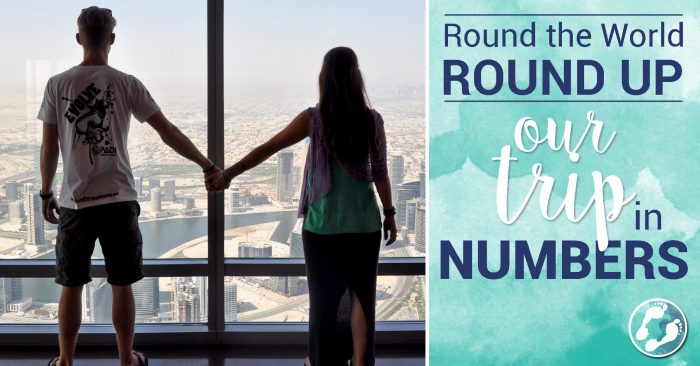
Source: twowanderingsoles.com
Planning a round-the-world adventure as a single traveler? Consider incorporating local experiences into your itinerary. Exploring popular hiking trails near me, like those listed on this resource, popular hiking trails near me , can offer incredible opportunities for solo discovery and connection with nature, enriching your global journey. This type of immersive travel often leads to a more profound appreciation of diverse cultures and a richer travel experience overall, further enhancing your round the world trip.
Global travel, especially long-distance journeys, demands proactive strategies for maintaining physical and mental health. This crucial aspect extends beyond mere medical precautions and encompasses a holistic approach to wellness, including stress management, jet lag mitigation, and connection with loved ones. A well-prepared traveler is a healthier traveler, maximizing enjoyment and minimizing potential disruptions.Maintaining optimal health during extensive journeys requires conscious effort and a personalized approach.
It’s not just about avoiding illness; it’s about fostering resilience and adaptability, ensuring the trip remains a positive experience. A mindful traveler anticipates challenges and proactively seeks solutions, ensuring both physical and mental well-being are prioritized.
Importance of Maintaining Physical Health
Sustaining physical health during a round-the-world trip necessitates careful attention to nutrition, hydration, and regular exercise. Proper nutrition fuels the body, supporting energy levels and immune function, crucial for navigating diverse environments and experiences. Adequate hydration counteracts dehydration, common in unfamiliar climates and during physical exertion. Regular exercise, even simple activities like walking, can maintain fitness levels and combat the sedentary nature of travel.
Integrating these elements into the daily routine is key to maintaining physical vigor and preventing potential health issues.
Strategies for Staying Mentally Healthy
Maintaining mental health during travel is as important as physical health. Creating a structured routine, even amidst flexibility, helps in managing stress and anxiety. Taking time for relaxation, such as mindfulness or meditation, fosters a sense of calm. Keeping a travel journal can provide a creative outlet for expressing thoughts and experiences. Building in downtime, such as enjoying local culture and social interactions, allows for personal reflection and emotional processing.
These practices contribute to a positive mental state, ensuring a richer and more fulfilling experience.
Managing Stress and Jet Lag
Stress and jet lag are common challenges for long-distance travelers. Strategies for managing stress include prioritizing sleep, practicing relaxation techniques like deep breathing, and maintaining a consistent sleep schedule, even when crossing time zones. Jet lag can be mitigated by gradually adjusting to the new time zone, avoiding alcohol and caffeine before bed, and consuming light meals. Using light therapy can also help the body adjust.
Careful planning and proactive measures can significantly lessen the impact of these issues.
Essential Health Precautions for Different Destinations
Health precautions vary significantly depending on the destination. Researching the specific health risks associated with each location is essential. This includes understanding local sanitation practices, potential infectious diseases, and recommended vaccinations. Pack appropriate medications, including any personal prescriptions, and consult with a doctor about potential health concerns. Familiarizing oneself with local emergency services can also be a valuable precaution.
This proactive approach reduces the likelihood of health issues and ensures a safer trip.
Staying Connected with Loved Ones
Maintaining connections with loved ones is crucial for mental well-being during a long-distance journey. Regular communication, whether through calls, video chats, or social media, helps to maintain a sense of connection. Sharing experiences and updates with family and friends enriches the travel experience and provides emotional support. Pre-arranged communication schedules can make this a regular part of the travel experience, and it is essential to stay connected with loved ones.
Planning a solo round-the-world adventure? Before you embark on your global trek, consider exploring some fantastic hiking sites near you. This can be a great way to test your physical and mental resilience, preparing you for the rigors of international travel and helping you discover hidden gems in your own backyard. Ultimately, these journeys lay the groundwork for a truly rewarding round the world trip for singles.
Final Conclusion: Round The World Trips For Singles
In conclusion, round the world trips for singles provide an unparalleled opportunity for personal growth and global exploration. By carefully planning, prioritizing safety, and embracing the cultural richness of each destination, you can craft a truly unforgettable experience. Remember, the world is waiting, and your adventure awaits.
FAQ Summary
What are some common concerns for solo travelers?
Safety and security are paramount. Research destination safety, inform someone of your itinerary, and be aware of your surroundings. Knowing basic emergency procedures and having a backup plan can ease concerns.
How can I stay connected with loved ones during the trip?
Utilize various communication tools like social media, messaging apps, and phone calls. Plan ahead for internet access in different locations and set a schedule for updates. This allows you to maintain contact while staying focused on your journey.
What are some ways to budget for a round-the-world trip?
Prioritize budgeting for flights, accommodations, and activities. Consider travel during the off-season, use budget-friendly accommodation options, and look for opportunities to experience local culture through free or low-cost activities.
How can I prepare for the cultural differences I might encounter?
Research the local customs, etiquette, and traditions of each country you’ll visit. Learning basic phrases in the local language, respecting local norms, and being mindful of the environment will help create a positive and respectful experience.
